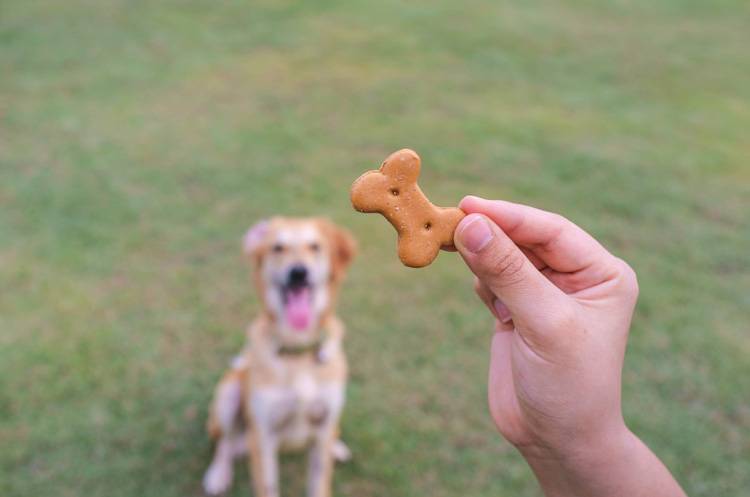

Using food lures during dog training can jump-start a behavior. However, it’s important to understand how to use a lure effectively. Check out these steps and video on using food lures while training your dog. Lure is not a four-letter word—it’s a valuable tool in dog training!
Somehow, using food lures and food rewards during dog training is considered cheating. I’m still scratching my head on this concept. Surely, you can capture (click and reward a dog when he’s doing a specific behavior) or shape (reward small steps toward a behavior) a new dog behavior, but sometimes a lure gets you started faster.
Now, some folks feel lures are bribery. Again, I’m scratching my head. I’m not bribing dogs. I’m luring them into a behavior and giving them the treat (lure) when they do the behavior. Treats are your dog’s currency so use properly and reward often. OK, I’m off my soapbox!
There is a technique to using food lures properly. Follow these steps:
I think the confusion about food lures is due to people who never fade a lure so their dogs become dependent on its presence or they won’t do the behavior. Well that’s our fault and not the dogs’. We never taught them otherwise. 🙂
Once you jump-start a behavior, you can fade a food lure. Follow these steps to fade food lures.
Once your dog can be lured into a behavior 4 out of 5 times, it’s time to add a cue.
Say cue and lure into behavior. Now, you’re pairing a cue with a behavior. Once you’ve practiced for several days, move to step 3.
Say cue and wait for dog to perform the desired behavior. Once he does, click and treat.
Usually, when adding a cue to a behavior, your dog may become confused and won’t respond to the new cue. Don’t repeat the cue. Wait a few seconds. If your dog still doesn’t do it, use the food lure. If this happens, this means your dog does not know the cue so go back to step 2.
Once your dog responds to a cue 4 out of 5 times during a training session, reward your dog after the behavior is finished. Reward with a food treat, game of tug, toss of the ball or whatever game your dog loves.
If you’re a dog lover dreaming of a rewarding, flexible career working with animals, now…
Launching a dog training business is one of the most rewarding things a dog lover…
Benefits of Becoming a Dog Groomer So you’re thinking about becoming a dog groomer. It’s…
If you’re an animal lover toying with the idea of building your own dog grooming…
Animal Behavior College’s (ABC) in-person dog training program combines two of the best things in…
Congratulations to Our New ABC Certified Dog Trainers, Veterinary Assistants, Pet Groomers, Cat Trainers, Aquarium…